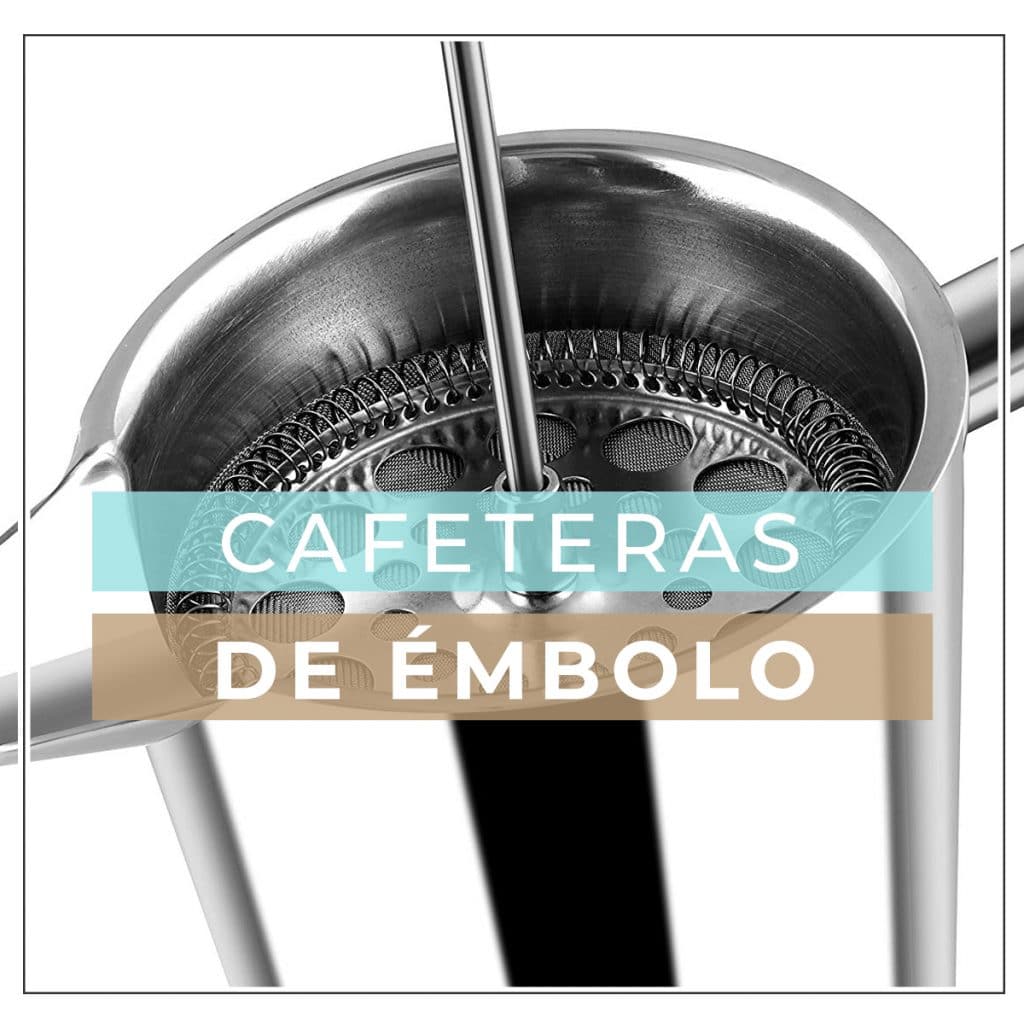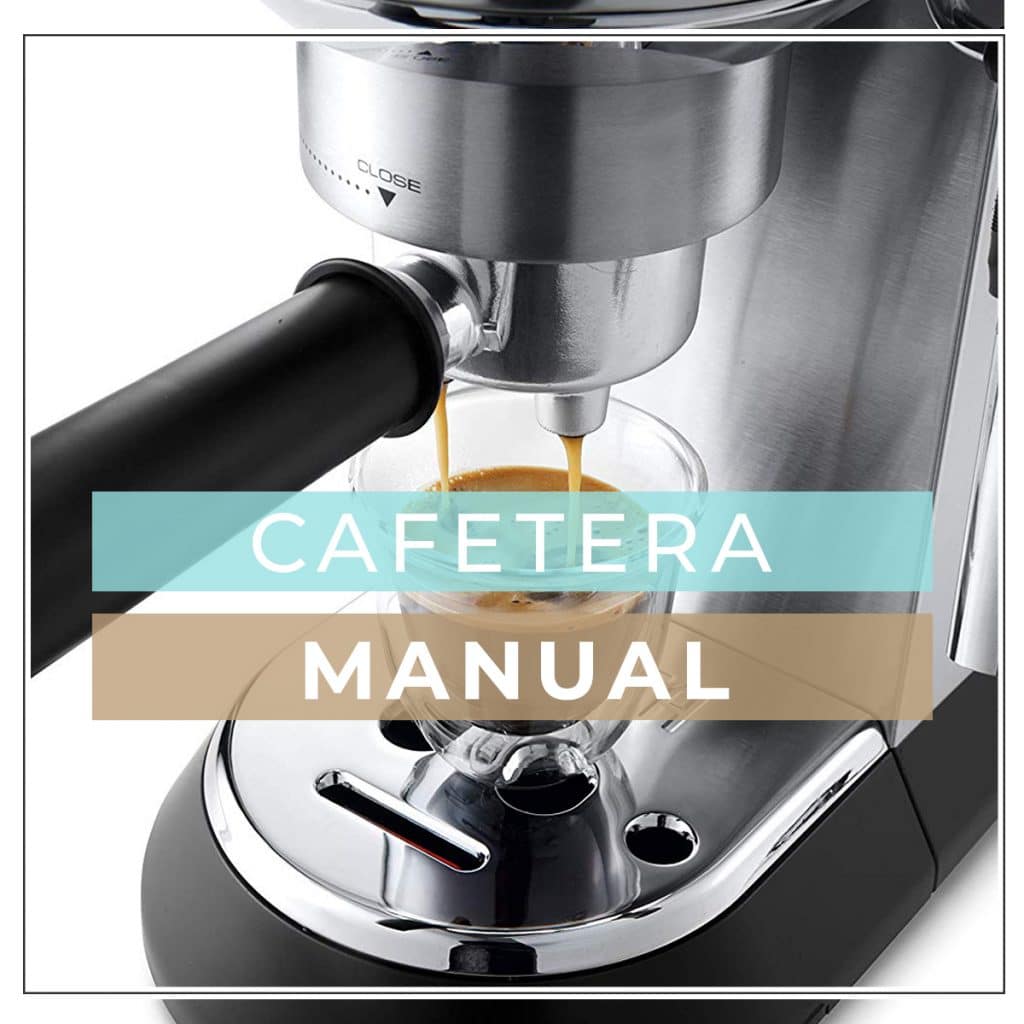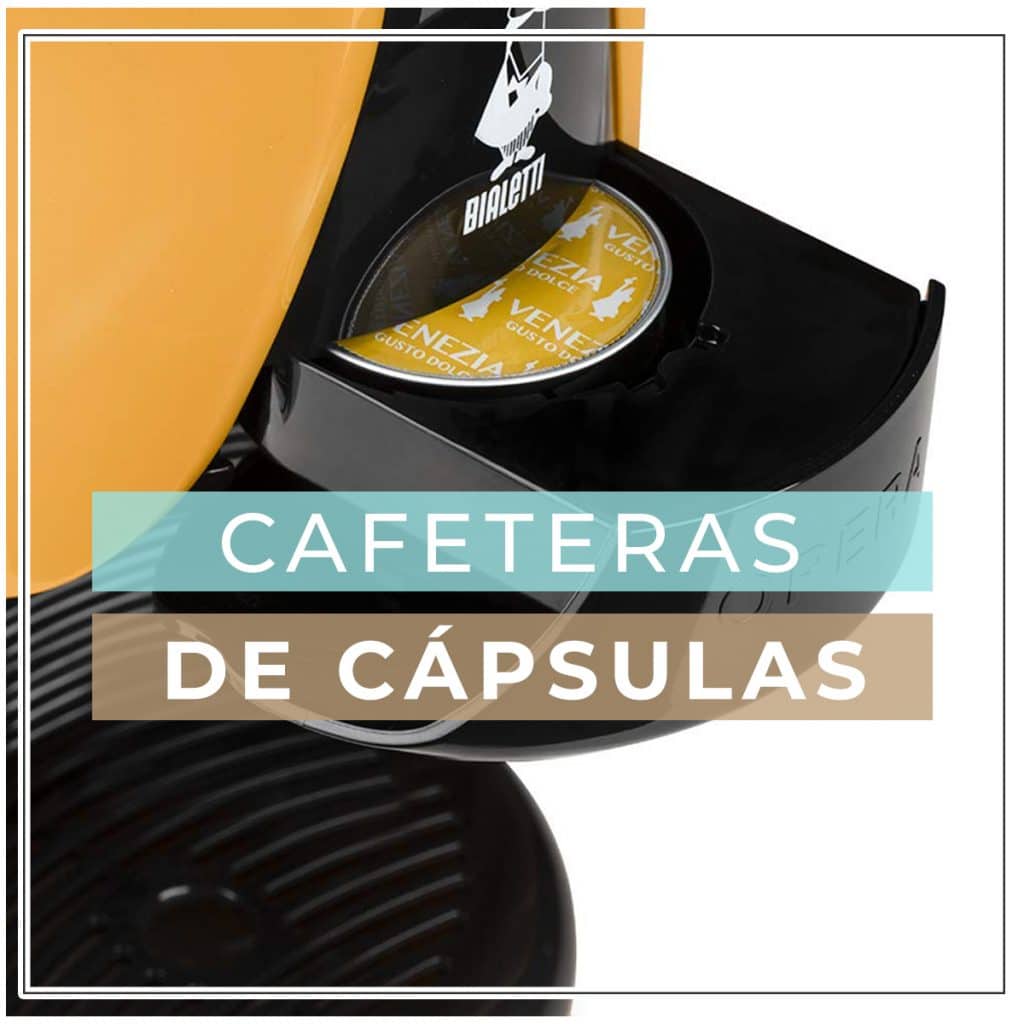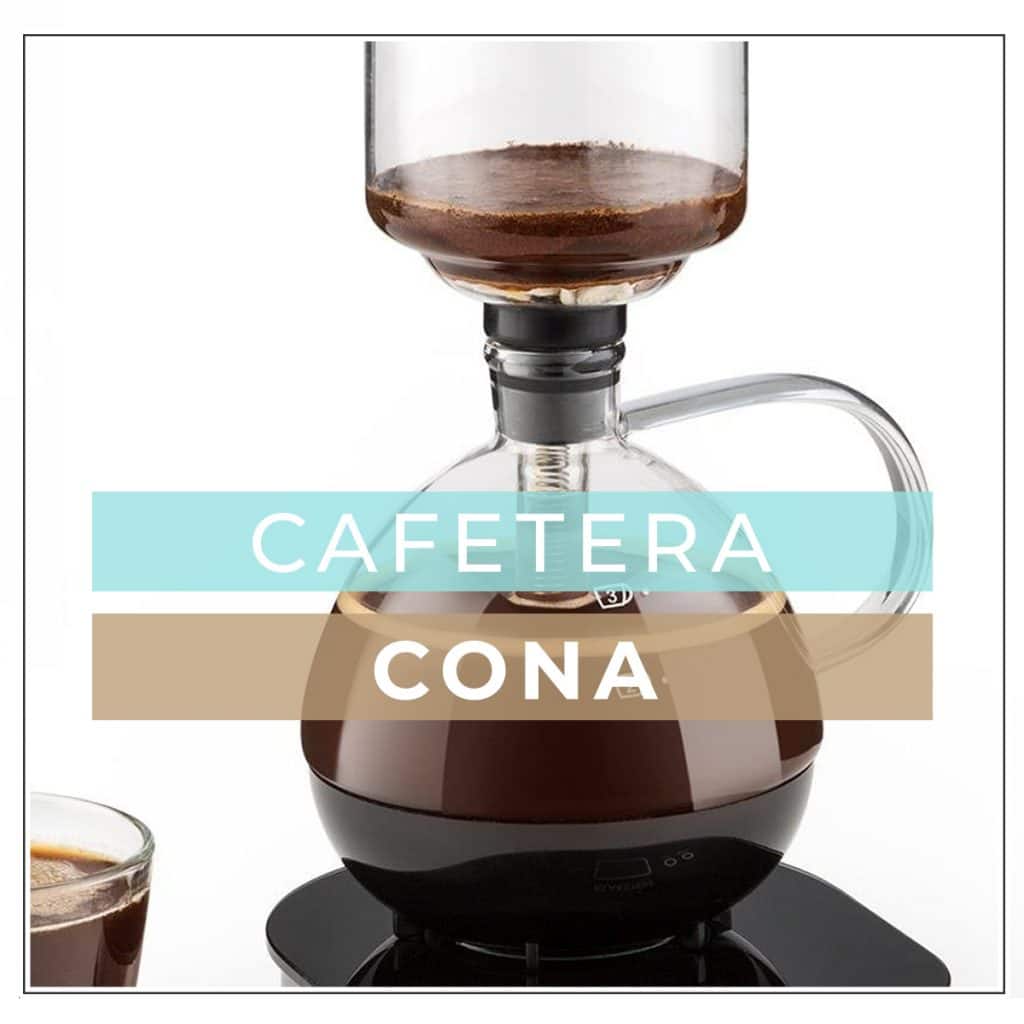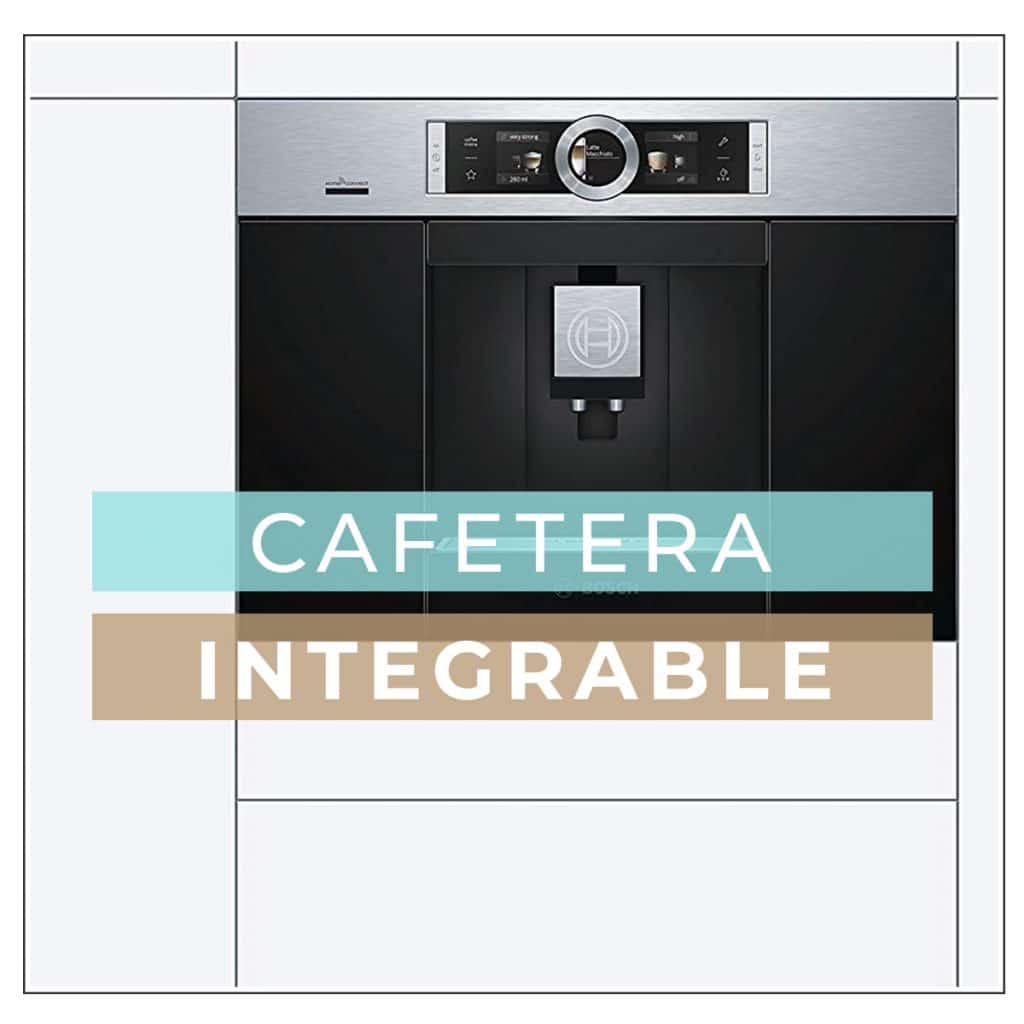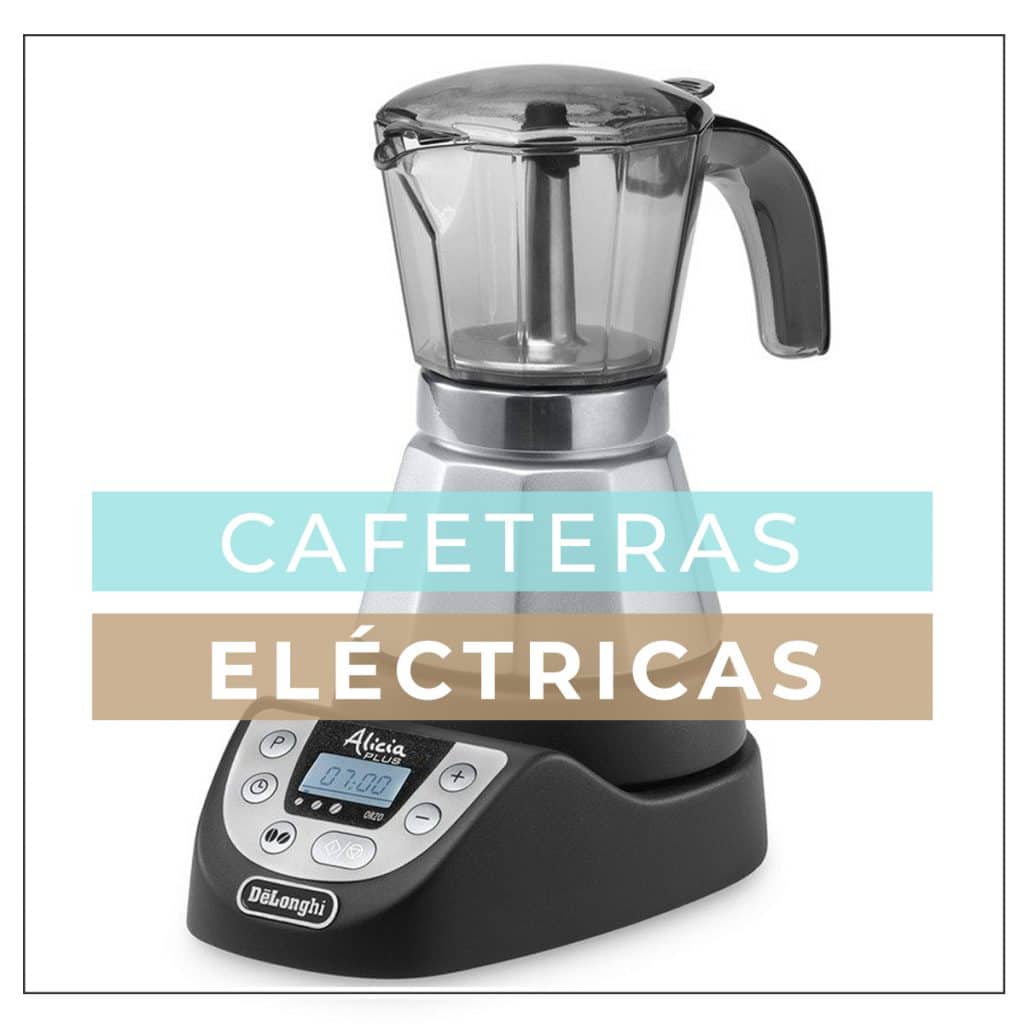Un good maintenance of your coffee maker not only will it make it work better and last longer in good condition, it could also positively affect the result of the coffee and even your health. A dirty coffee pot could pose some risks, although it is something that few people know. In fact, many people who use coffee machines on a daily basis neglect an essential part of maintenance, such as cleaning and disinfection.
It is not enough simply to implement a descaling temporarily, you also have to disinfect some parts of your coffee maker. Here you will find everything you need to know for proper sanitation of the different types of coffee machines...
Importance of cleanliness

Some people think that the hot water from a coffee maker is enough to kill bacteria or viruses, and that this automatically sanitizes the coffee maker. But it's not like that, if you don't clean the coffee maker you could be having a coffee with some other microorganism that you would not like... And some studies have shown it:
- Some scientific studies, such as the one by NSF International, showed that in some humid environments yeasts and molds tend to proliferate in coffee machines. In the study, this type of organism would be found in the deposits of coffee machines and other parts in 50% of homes.
- Another study of CBS News He took samples from 11 domestic coffee machines, in which he found eleven different types of bacteria, such as Enterobacteriaceae, Pseudomonas aeruginosa, etc.
Therefore, cleaning and disinfecting the coffee maker should be a routine procedure if you are concerned Your Health. To this we must add the "health" of the coffee maker itself, since if you maintain it properly it will work in perfect condition and can prevent possible breakdowns, which will save you money on repairs or purchases of new coffee makers.
You know that lime is one of the biggest enemies of a coffee maker, obstructing some of its ducts and causing them to stop working if descaling processes are not carried out from time to time. Even more so if you use tap water and live in an area where the water is especially hard.
If you would like to more reasons, you should know that coffee is mainly made up of essential oils, which provide the flavor, aroma and properties of the grain. This fat can also accumulate in certain parts of the coffee maker, such as the filters, which can cause a certain residue to accumulate that could produce bad odors and that the coffee does not have the same quality.
Some people mix sugar with their coffee grounds, which can also clog some filters. Other capsule coffee machines, or with vaporizer, can use milk powdered or liquid milk during the preparation process. When the milk residue dries out and rots, it produces an extremely unpleasant odor and stains the coffee maker. Conclusion, you should clean your coffee maker periodically, for your own good, that of your loved ones, and that of the coffee maker itself.
General disinfection
One thing is to clean the scale from the coffee machine, and another thing is disinfect the coffee maker, that is, maintain good hygiene of all your washable items. Many people simply limit themselves to descaling the coffee maker, but they forget this other equally important process and the one that most affects people's health.
El process To disinfect a coffee maker is simple:
- If it is a plunger coffee maker, Italian, etc., you can wash it in the dishwasher (if the manufacturer recommends washing it by this process), or wash it by hand as you would any other kitchen gadget. The dishwashing solution will remove the grime and sanitize the parts of the coffeemaker.
- The problem is when it comes to a electric coffe maker, whether capsules, drip, express, etc. In this case, many of its components cannot get wet. Therefore, you should remove all those elements that can be removed from the machine, such as the capsule holder, the head, filters, water tank, etc., and proceed to wash them in the same way as in the previous case. The rest of the body of the coffee maker, on the outside, could be disinfected using a disinfectant wipe, or a disinfectant solution (bleach + water in a 1:50 ratio) spread with a cloth and then drying it very well so that no type of liquid penetrates inside of her.
This disinfection is especially important when the coffee maker is shared, such as in some offices. Even more in times of pandemic.
Clean Italian or Moka pot
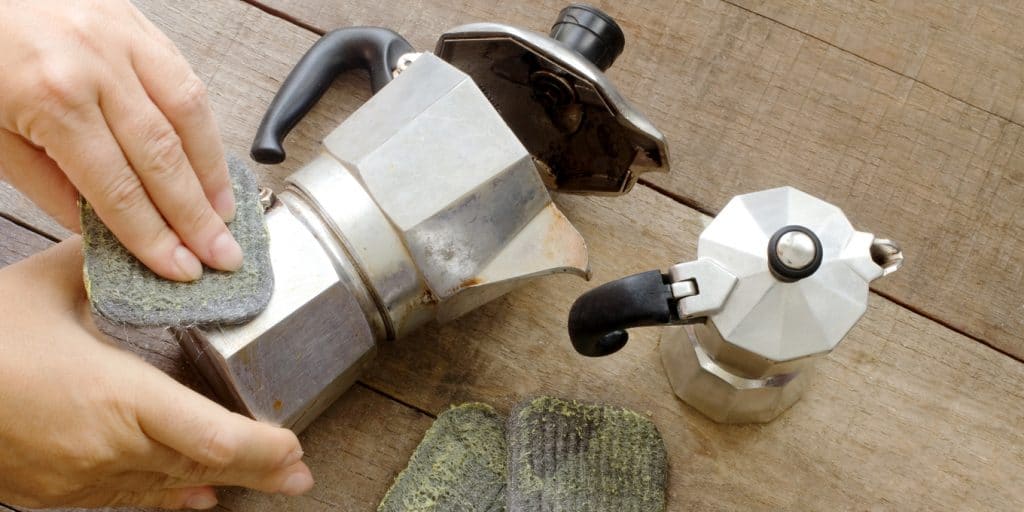
If you have an Italian or Mocha coffee maker, you can clean/descale the coffee maker in a very simple way by following these steps:
- If it is stainless steel:
- Make a 1:3 solution of vinegar and water, that is, one part vinegar to 3 parts water. It should be enough to fill the coffee maker's reservoir just like you would to make a regular cup of coffee.
- Assemble the coffee maker with the rest of the parts, like when you prepare coffee, but without adding the ground coffee in the filter.
- Put the pot on the stove and wait for the water to rise to the top. This will cause the steam and the action of the vinegar to pass through the filter and the chimney, cleaning the traces of limescale.
- Take the pot off the heat and wait for it to cool down.
- When it's cool, you can throw away the solution and wash the pot with dish soap and water. You can use a scouring pad or preferably a steel wool. It is important that it is well rinsed.
- Once it has dried, it is ready to use again.
- if it is aluminum:
- You have two alternatives to prepare the solution:
- 2 tablespoons of white vinegar + 1 liter of water (better if it is distilled so that it does not leave residues).
- Juice of 1/2 lemon + 1 liter of water.
- Bring this solution to a boil, when it boils remove from the heat.
- Put the separate parts of the coffee maker in there (submerged). That will soften the lime.
- Then wash it with soap and water as normal.
- Once it has dried, it is ready.
- You have two alternatives to prepare the solution:
Clean Nespresso coffee machine
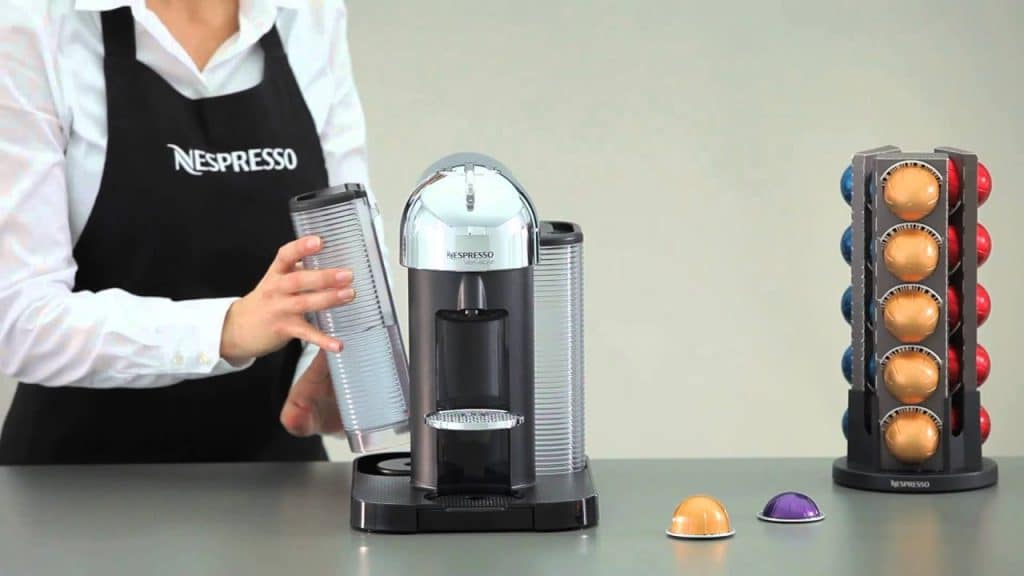
Nespresso capsule coffee machines can be disinfected just like any other capsule coffee machine. They will not need a special procedure. The steps to follow are:
- Purchase a water softener for these types of machines. They can be found in many supermarkets. They can be in pill or liquid form.
- Read carefully the steps to follow, since each manufacturer recommends certain proportions of water. But basically it is usually to fill the tank with approximately 1/2 liter of water and with the product for the lime.
- Put a container to drip the product.
- Then turn on the coffee maker as if you were making a coffee, but without a capsule:
- Automatic: if it is automatic, you will have to repeat the process several times until the deposit is exhausted.
- Manual: if it is manual, you can activate the lever with hot water until the tank runs out. You should use a container in which you can pour the amount of the deposit or go using glasses and when one is full stop the process to empty and put another...
- Repeat the process until the entire tank is used up with the product.
- Once finished, rinse the tank well and put clean water.
- Repeat the procedure again with clean water (this time without an anti-limescale product). This will cause all the internal ducts to be rinsed so that it does not leave any traces of the product. Once the clean water tank has run out, the machine will be ready.
Clean Dolce-Gusto coffee machine
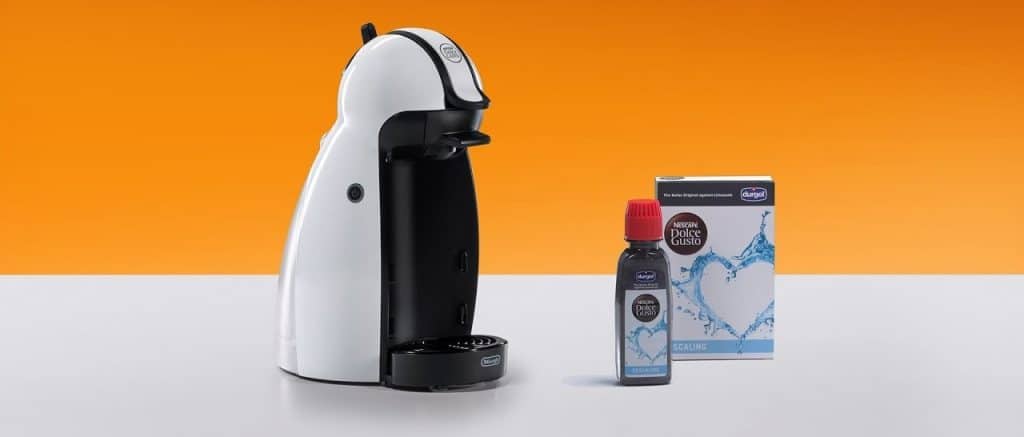
For the Dolce-Gusto coffee machine, you can follow a procedure exactly the same as above:
- Purchase a water softener for these types of machines. They can be found in many supermarkets. They can be in pill or liquid form.
- Read carefully the steps to follow, since each manufacturer recommends certain proportions of water. But basically it is usually to fill the tank with approximately 1/2 liter of water and with the product for the lime.
- Put an empty container so that the product that drips falls.
- Then turn on the coffee maker as if you were making a coffee, moving the lever towards the hot side so that the product passes through the entire coffee maker and without the capsule inserted.
- Repeat the process until the entire tank is used up with the product.
- Once finished, rinse the tank well and put clean water.
- Repeat the procedure again with clean water (this time without an anti-limescale product). This will cause all the internal ducts to be rinsed so that it does not leave any traces of the product. Once the clean water tank has run out, the machine will be ready.
Clean espresso machine
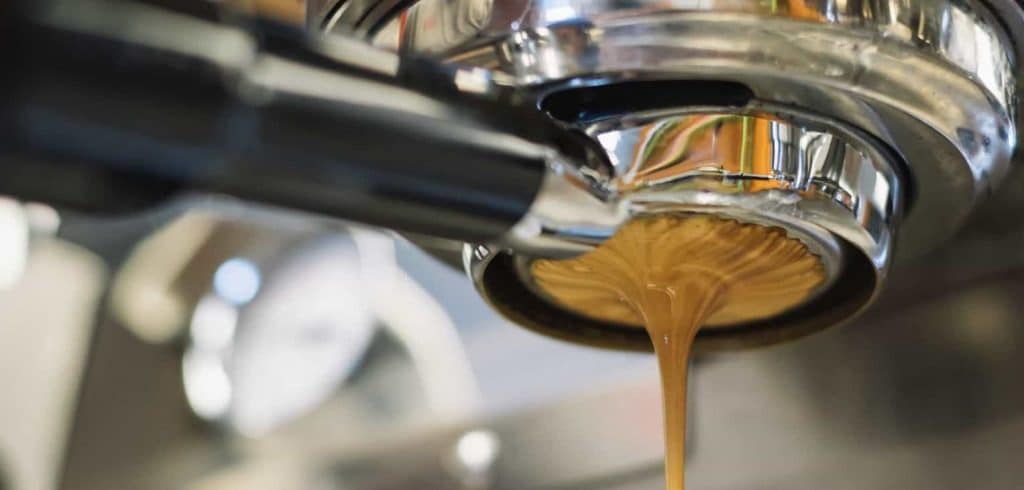
These types of espresso machines, both manual and automatic, are becoming very fashionable lately. More and more households are replacing their capsule coffee machines with these others, among other things because of the milk vaporizer or because of how cheap they are compared to the capsules. To descale this type of machine, the process is
- Buy a descaling product for coffee machines in your supermarket. The best is the one recommended by the manufacturers in the instruction manual for your machine.
- Put the product in the proportion indicated by the anti-limescale manufacturer together with the water in the machine's tank.
- Connect the coffee maker and it works in the same way as when you prepare a coffee, but without coffee.
- When the tank has been used up with the product, throw away the resulting water.
- Rinse out the water reservoir.
- Heat a little water in a saucepan or in the microwave and fill it again with that clean water, this time without a descaling product.
- Put the machine back to work so that it eliminates the internal remains that have remained.
- Throw away the water resulting from rinsing and the machine will be ready.
Clean drip or American coffee maker
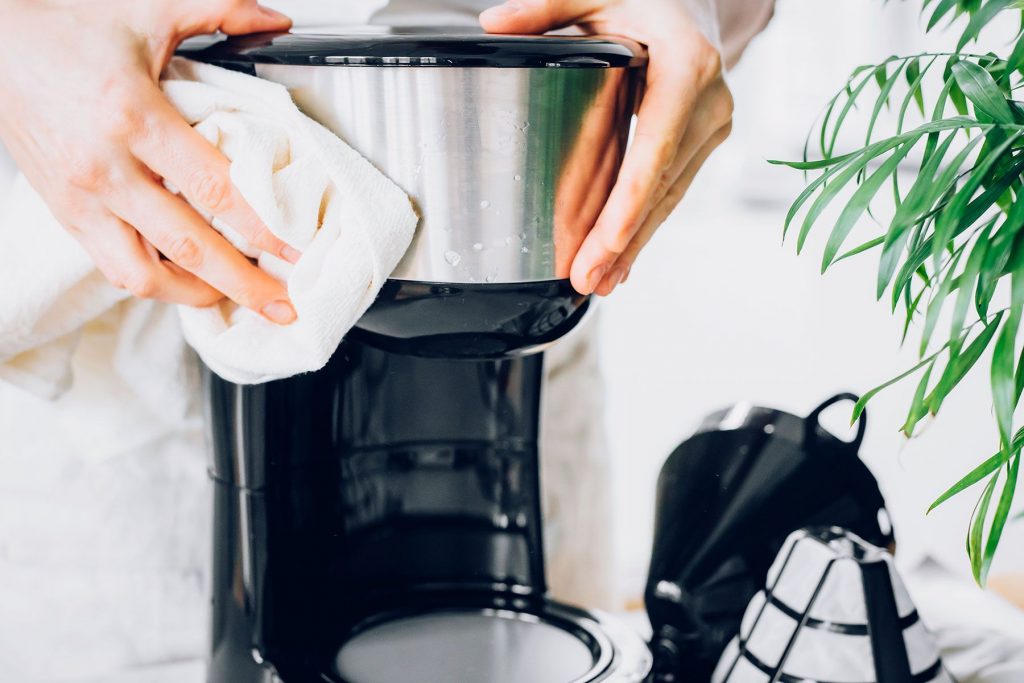
Drip coffee machines also have a special cleaning, or descaling, procedure. The followed They are that simple:
- Fill the reservoir with a roughly equal parts vinegar and water solution. In this case, the proportion of vinegar is higher, since it will take less time to go through all the ducts and must have a faster action.
- Put the coffee maker to work as usual, only if the coffee is in the filter. The filter will be empty for the solution to pass through.
- When it's done, use the same water you've poured into the jug to refill the reservoir again and repeat the process to make it happen again.
- Now repeat the previous process again, but this time only with water, without vinegar. That will clear up any remaining vinegar challenges so it doesn't taste bad.
- Finally, wash the jug and the water tank of the coffee maker with soap and water to remove all the remains and that's it.
Cleaning industrial or commercial coffee maker
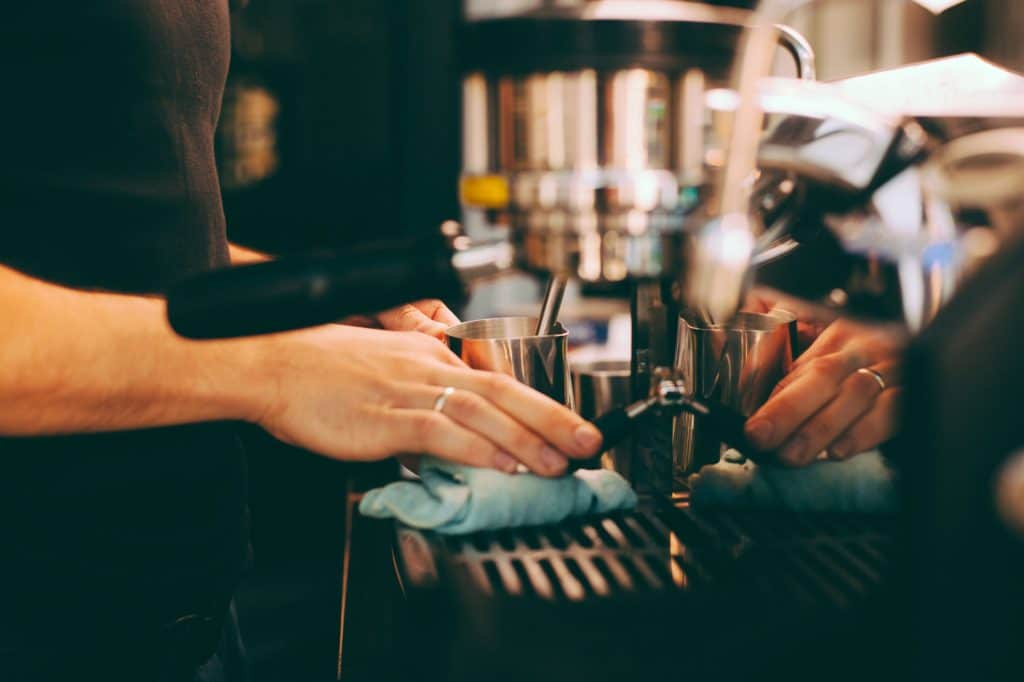
All the industrial coffee machines, those used for commercial purposes in cafes, restaurants, etc., also have their cleaning process. In these cases, it is even more critical, as many people are served coffee, so an infection could spread if good maintenance is not maintained. The procedure is
- Clean the pool daily. That is, the body of the coffee maker. This cannot be washed under water, but a 1:50 solution of bleach and water can be used with a cloth to disinfect all external surfaces.
- Remove the portafilter head and wash it as you would dishes, with dishwasher and water. If you haven't cleaned it for several days, you may need a previous softening process, immersing it in a solution of vinegar and water and then proceeding to wash it.
- Other removable parts must also be cleaned. For example, if the water tank can be removed, you can clean it too, or the coffee bean grinder, etc. You can simply use soap and water, or use acidic solutions such as vinegar and water if you see that it has traces of limescale.
